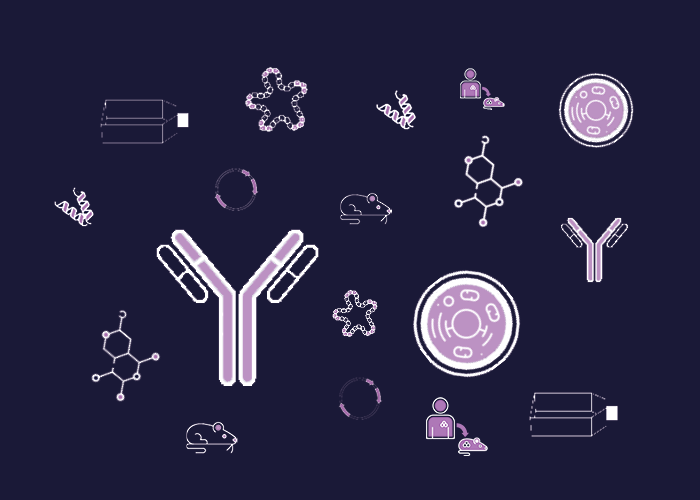
Cat. #151036
Anti-ICAM1 [15.2]
Cat. #: 151036
Sub-type: Primary antibody
Unit size: 100 ug
Availability: 3-4 weeks
Target: ICAM1 (CD54)
Class: Monoclonal
Application: FACS ; IHC ; IP ; Fn
Reactivity: Human
Host: Mouse
£300.00
This fee is applicable only for non-profit organisations. If you are a for-profit organisation or a researcher working on commercially-sponsored academic research, you will need to contact our licensing team for a commercial use license.
Contributor
Inventor: Nancy Hogg
Institute: Cancer Research UK, London Research Institute: Lincoln's Inn Fields
Tool Details
*FOR RESEARCH USE ONLY (for other uses, please contact the licensing team)
- Name: Anti-ICAM1 [15.2]
- Alternate name: Intercellular Adhesion Molecule 1; Major Group Rhinovirus Receptor; ICAM-1; Cell Surface Glycoprotein P3.58; Human Rhinovirus Receptor; P3.58; CD54; BB2
- Research fields: Cell biology;Immunology;Stem cell biology;Tissue-specific biology
- Clone: 15.2
- Tool sub type: Primary antibody
- Class: Monoclonal
- Conjugation: Unconjugated
- Molecular weight: 85-115 kDa
- Strain: Balb/c
- Reactivity: Human
- Host: Mouse
- Application: FACS ; IHC ; IP ; Fn
- Description: ICAMs are members of the immunoglobulin superfamily that is characterised by the presence of immunoglobulin-like domains. ICAM-1 is expressed in haemopoietic cells and vascular endothelium. Cytokine activation causes ICAM-1 expression in other cell types such as fibroblasts and keratinocytes. ICAM-1 is involved in leukocyte recruitment and inflammation. ICAM-1 binds LFA-1 (CD11a/CD18) and Mac-1 (CD11b/CD18).
- Immunogen: Rheumatoid synovial cells and human monocytes.
- Isotype: IgG1
- Myeloma used: Sp2/0-Ag14
- Recommended controls: Tonsil
Target Details
- Target: ICAM1 (CD54)
- Molecular weight: 85-115 kDa
- Tissue cell line specificity: Tonsil
- Target background: ICAMs are members of the immunoglobulin superfamily that is characterised by the presence of immunoglobulin-like domains. ICAM-1 is expressed in haemopoietic cells and vascular endothelium. Cytokine activation causes ICAM-1 expression in other cell types such as fibroblasts and keratinocytes. ICAM-1 is involved in leukocyte recruitment and inflammation. ICAM-1 binds LFA-1 (CD11a/CD18) and Mac-1 (CD11b/CD18).
Applications
- Application: FACS ; IHC ; IP ; Fn
Handling
- Format: Liquid
- Concentration: 1 mg/ml
- Unit size: 100 ug
- Storage buffer: PBS with 0.02% azide
- Storage conditions: -20° C
- Shipping conditions: Dry ice
References
- Vsquez et al. 2016. Microbes Infect. :. PMID: 27717894.
- Plasmodium falciparum isolates from patients with uncomplicated malaria promote endothelial inflammation.
- Intercellular adhesion molecule 1 serves as a primary cognate receptor for the Type IV pilus of nontypeable Haemophilus influenzae.
- Novotny et al. 2016. Cell Microbiol. :. PMID: 26857242.
- Perturbation of adhesion molecule-mediated chondrocyte-matrix interactions by 4-hydroxynonenal binding: implication in osteoarthritis pathogenesis.
- El-Bikai et al. 2010. Arthritis Res Ther. 12(5):R201. PMID: 20977750.
- Conway et al. 2010. Am J Physiol Heart Circ Physiol. 298(2):H367-74. PMID: 19915176.
- Endothelial cell responses to atheroprone flow are driven by two separate flow components: low time-average shear stress and fluid flow reversal.
- Lauriello et al. 2005. Acta Otorhinolaryngol Ital. 25(5):284-91. PMID: 16602327.
- A two-year course of specific immunotherapy or of continuous antihistamine treatment reverse eosinophilic inflammation in severe persistent allergic rhinitis.
- Stanley et al. 2000. Biochem J. 351(Pt 1):79-86. PMID: 10998349.
- The second domain of intercellular adhesion molecule-1 (ICAM-1) maintains the structural integrity of the leucocyte function-associated antigen-1 (LFA-1) ligand-binding site in the first domain.
- Dransfield et al. 1992. J Cell Biol. 116(6):1527-35. PMID: 1541641.
- Interaction of leukocyte integrins with ligand is necessary but not sufficient for function.





